Environment Setup
|
This tutorial was developed and tested with:
|
Container Management Tools
The following tools are required to run the exercises in this tutorial. Please ensure that they are installed and properly configured before proceeding with any of the tutorial chapters.
| Tool | Fedora | Debian |
|---|---|---|
|
|
|
|
|
|
|
||
|
Helm install (or Snap Store) |
|
|
|
|
|
||
|
|
|
Note: some of these tools are available through the Web Terminal provided by the Web Terminal Operator.
ODF Operator
You can use the Red Hat OpenShift Container Platform web console to install Quay prerequisites by following these steps:
-
Open a browser window and log in to the Red Hat OpenShift Container Platform web console.
-
From the Administrator perspective, click on
Operatorsand then selectOperatorHub. -
In the
Filter by keywordfield, typeODF.
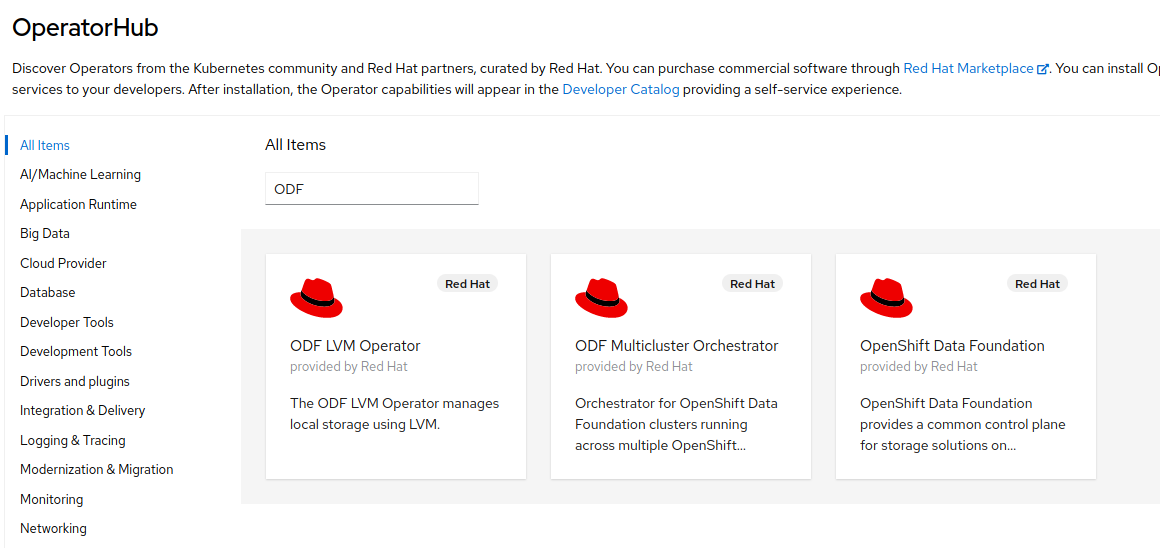
-
Select the Red Hat OpenShift Data Foundation tile and click
Installbutton.
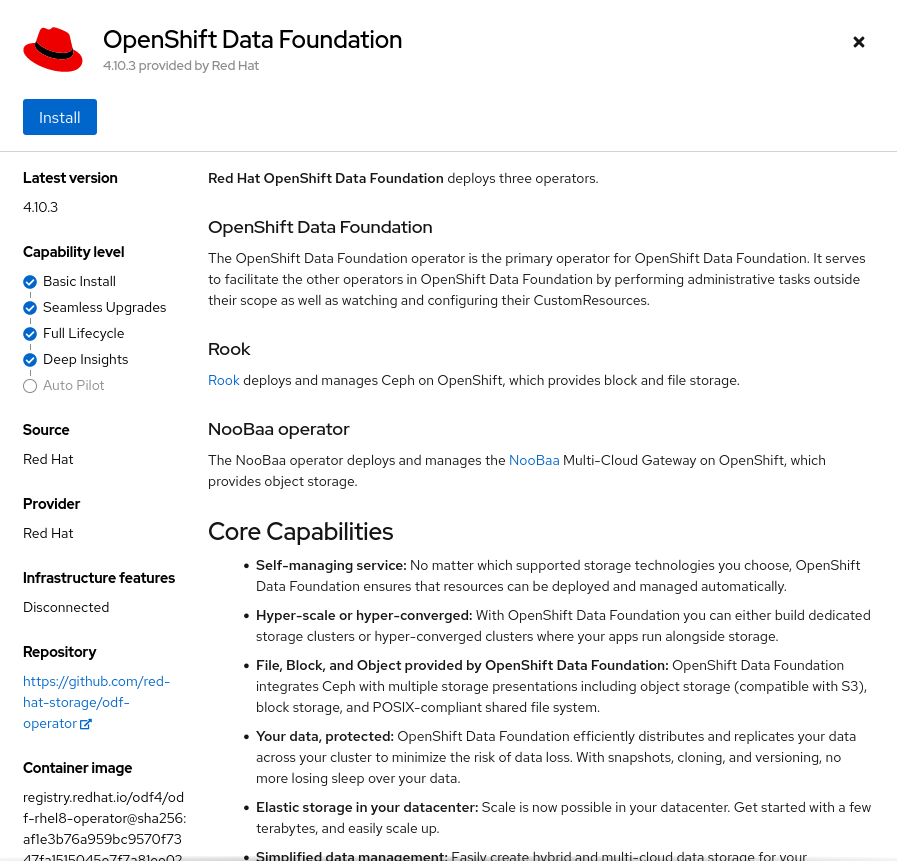
-
On the Install Operator page, select
stable-4.10from the list of available Update Channel options, and then choose A specific namespace on the cluster. Leave the default value of Installed Namespace as openshift-storage, and set the Update Approval to Automatic. Also, make sure to setEnablethe Console Plugin.
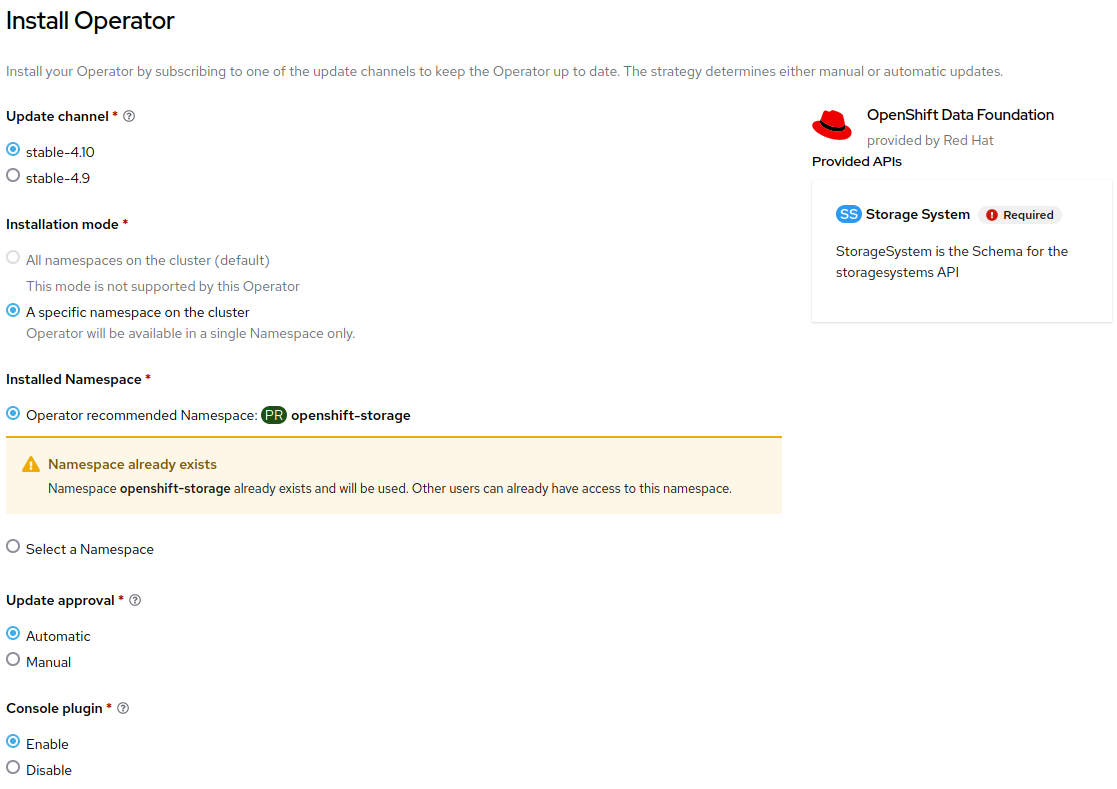
-
Click
Install.
Creating the standalone object gateway
For workshop testing purposes, we will deploy the Multi-Cloud Object Gateway (MCG) component provided by the Red Hat OpenShift Data Foundation Operator.
The MCG provides a S3-compatible object storage interface for our Quay deployment managed by the Operator. The gateway is used in combination with the Kubernetes PersistentVolume storage, which is mounted on the gateway as a backing store for object storage, and any block-based StorageClass is supported.
| This is not a high-availability (HA) solution. |
-
Create the NooBaa object storage:
cat <<EOF | oc apply -f -
apiVersion: noobaa.io/v1alpha1
kind: NooBaa
metadata:
name: noobaa
namespace: openshift-storage
spec:
dbResources:
requests:
cpu: '0.1'
memory: 1Gi
dbType: postgres
coreResources:
requests:
cpu: '0.1'
memory: 1Gi
EOF-
After some time, verify if the MCG has been provisioned:
oc get -n openshift-storage noobaas noobaa
After creating the Multi-Cloud Object Gateway, a new default backing store for all the ObjectBucketClaim issued by the Operator is automatically created.
|
Installing Quay Operator
You can use the Red Hat OpenShift Container Platform web console to suscribe and deploy the Red Hat Quay Operator.
-
Open a browser window and log in to the Red Hat OpenShift Container Platform web console.
-
From the Administrator perspective, click on
Operatorsand then selectOperatorHub. -
In the Filter by keyword field, type
Red Hat Quay.
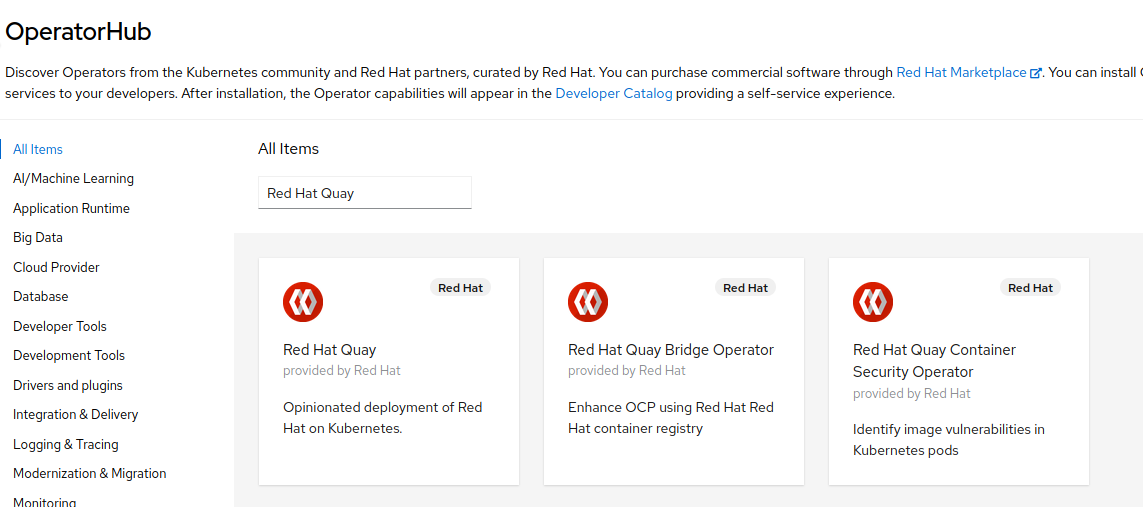
-
Select the Red Hat Quay tile and click on the
Installbutton.
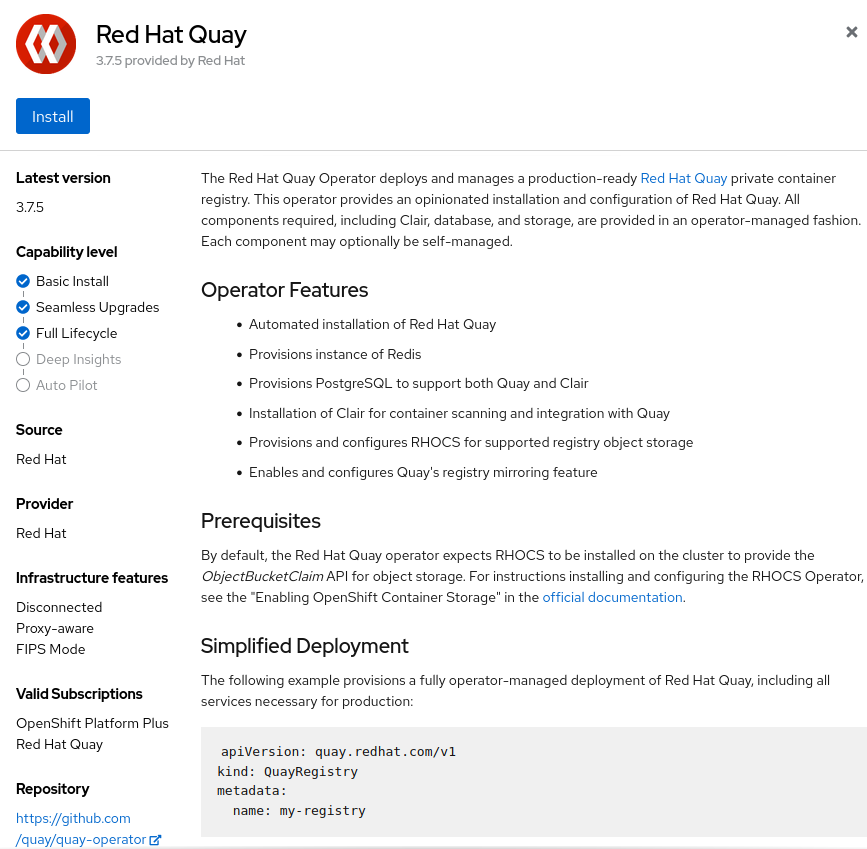
-
On the Install Operator page, select
stable-3.7from the list of available Update Channel options. Then, chooseAll namespaces on the cluster (default)as the installation mode and selectAutomaticfor update approval.

-
Click
Install.
Deploying Quay
-
Create a new
quay-workshopproject. -
From the Administrator perspective, navigate to
Operatorsand then selectInstalled Operators. Choose thequay-workshopproject and select the Red Hat Quay operator. -
Click
Create instanceto create a new Quay Registry instance.
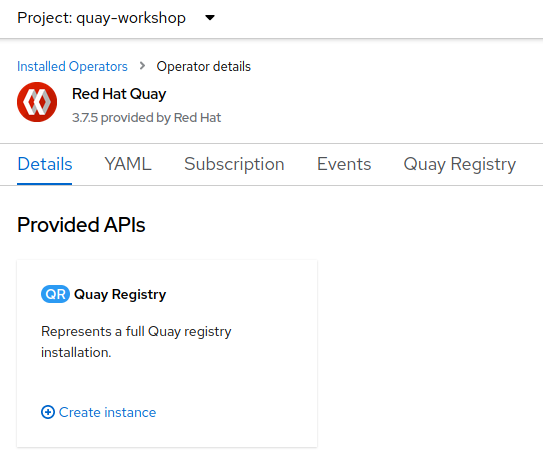
-
If desired, change the name, and then click Create.
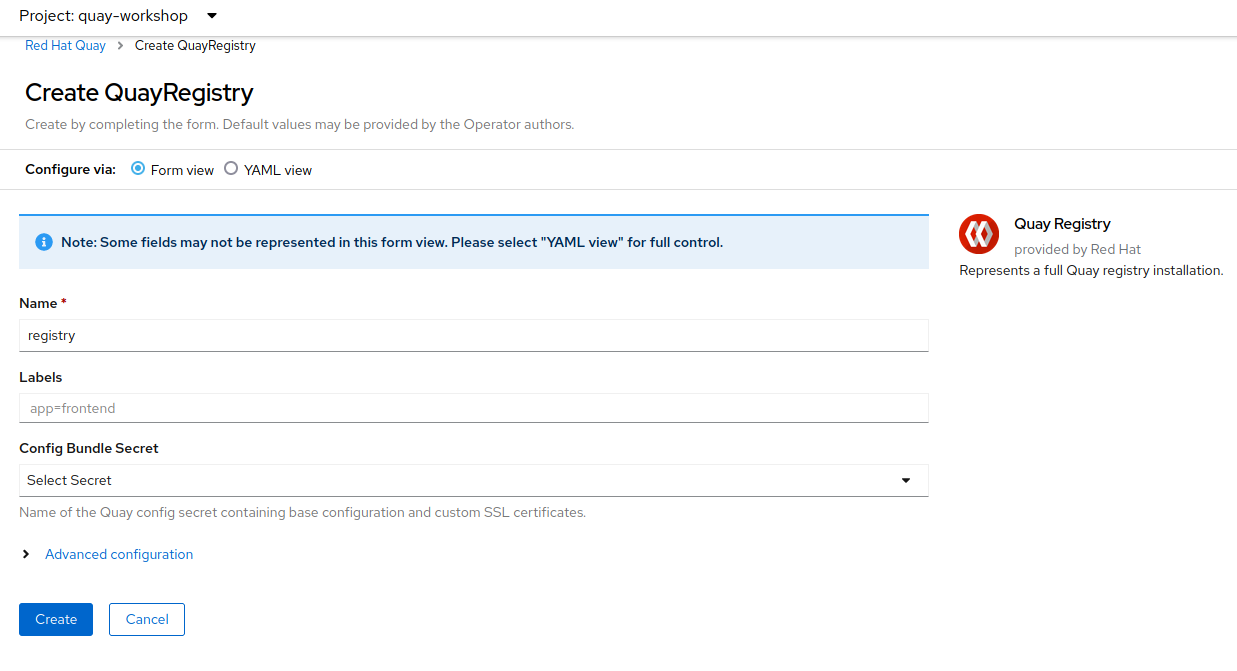
Please check if the init container fails during the Quay registry deployment. If it fails, please verify if a LimitRange exists in the current OCP project. Sometimes, the RHPDS environment creates a LimitRange automatically when a new project is created.
|
Export environment variables
It is recommended to set the QUAY_HOSTNAME environment variable in the working terminal before executing the commands. Alternatively, the hostname can be provided directly in the commands as needed.
|
QUAY_HOSTNAME=$(oc get route registry-quay -n quay-workshop -o jsonpath={.spec.host})